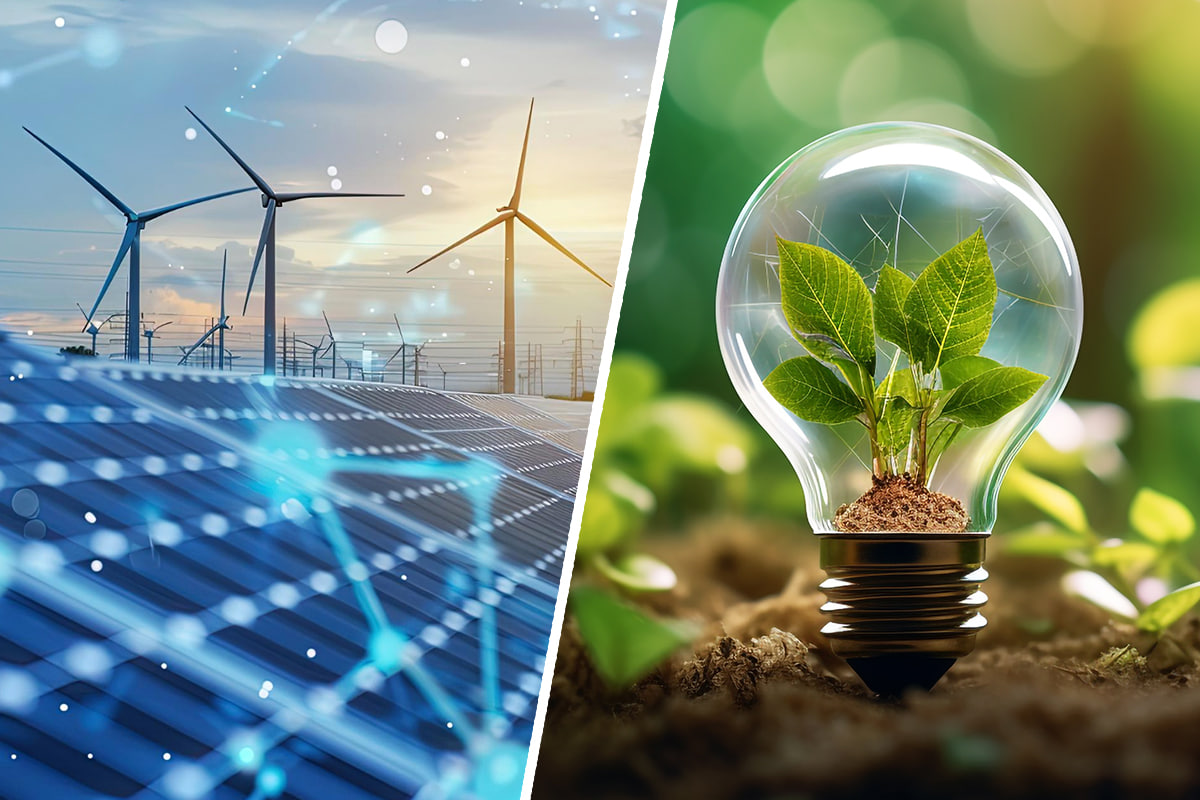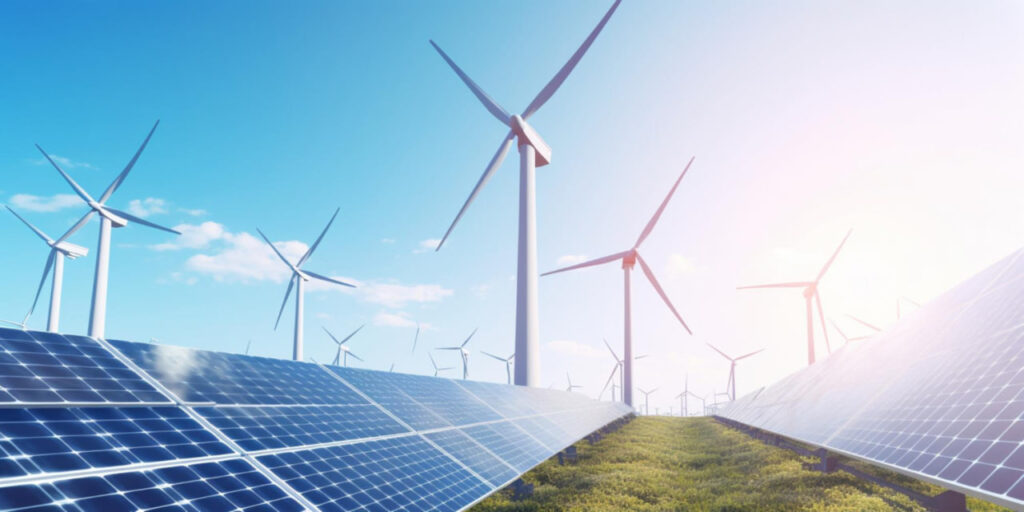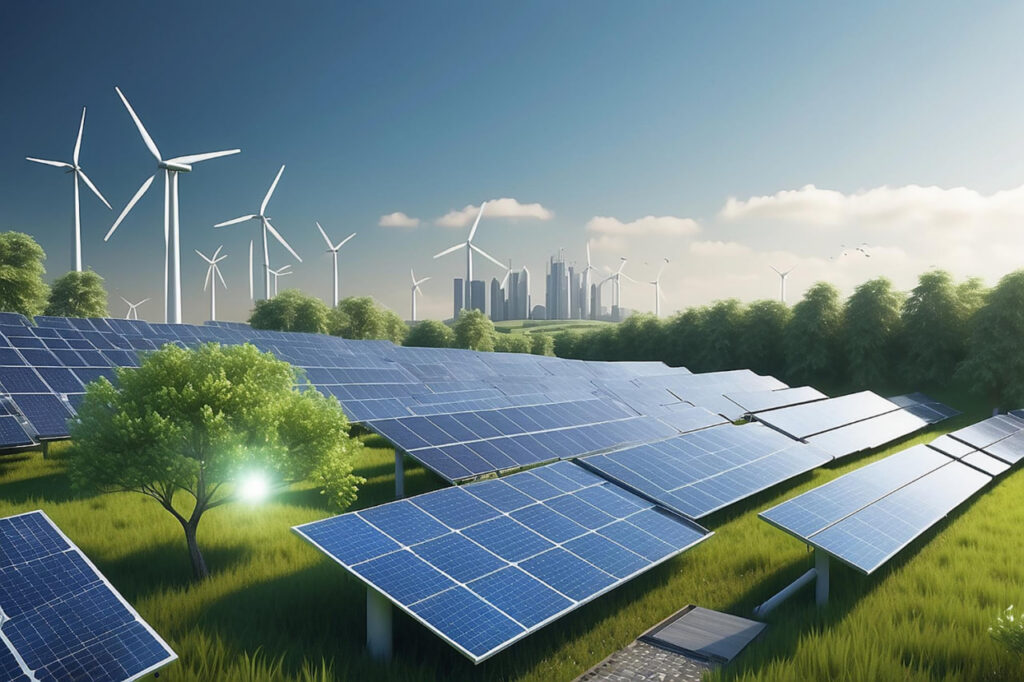The Importance of Clean Energy for a Sustainable Tomorrow

The Role of Energy in Climate Change

Energy production, primarily from burning fossil fuels like coal, oil, and gas, is a significant contributor to climate change. These energy sources emit greenhouse gases, notably carbon dioxide, which trap heat in the atmosphere, leading to global warming. This warming disrupts weather patterns, accelerates sea-level rise, and increases the frequency of extreme weather events. To avoid the worst impacts of climate change, we must drastically reduce emissions by 2030 and aim for net-zero by 2050.
Renewable energy sources, such as solar, wind, and hydropower, offer a solution. They produce little to no greenhouse gases during operation and don’t emit harmful pollutants. The adoption of renewable energy is on the rise, with renewables accounting for 28.7% of global electricity in 2021 and expected to reach 43% by 20301. This shift aligns with growing electricity demand and helps curb emissions.
Renewable energy technologies have become more affordable due to technological advances and economies of scale. Solar photovoltaic (PV) costs, for example, have dropped by nearly 90% over the past decade, making it an economically viable option2. The affordability of clean energy is particularly crucial for low- and middle-income countries, which stand to benefit from reduced energy costs and increased energy security.
Renewable energy also offers health benefits. Air pollution, largely driven by fossil fuel combustion, leads to millions of premature deaths annually. Shifting to clean energy significantly reduces air pollutants, improving public health and reducing healthcare costs.
Furthermore, the renewable energy industry creates jobs. It is more labor-intensive compared to the mechanized and capital-heavy fossil fuel sector. As clean energy projects grow, they generate employment opportunities directly within the industry and indirectly through related sectors.
While fossil fuels still account for a significant portion of global greenhouse gas emissions, transforming our energy landscape to favor renewables is crucial in fighting climate change and promoting a more sustainable future. Continued commitment and investment in renewable technologies are necessary to build a clean, resilient energy system that supports a thriving planet.
Advantages of Renewable/Clean Energy

- Abundance and accessibility: Renewable energy sources, such as solar, wind, and hydroelectric, are abundant and accessible worldwide. They are not confined by geographical or political boundaries, offering a reliable supply even in areas where fossil fuels might be scarce.
- Cost-effectiveness: Financially, renewable energy has proven to be cost-effective. The drop in costs for solar photovoltaic panels and wind turbines is significant, making it cheaper in some parts of the world to build and operate new wind or solar plants than to maintain existing coal plants. The International Renewable Energy Agency estimates that renewable energy could supply 90% of the world’s electricity by 2050, with further cost reductions expected.
- Healthcare savings: Renewable energy also contributes to healthcare savings. By reducing air pollutants from burning fossil fuels, it helps to decrease the incidence of respiratory diseases, heart conditions, and premature deaths. This, in turn, lowers healthcare costs and creates healthier communities.
- Job creation: The renewable energy sector has substantial potential for job creation. It is inherently more labor-intensive, generating employment opportunities in manufacturing, construction, maintenance, and operation. As solar panel installations increase, so does the demand for skilled technicians, leading to stable, long-term jobs.
- Economic stimulation: Renewable energy projects also stimulate local economies by generating jobs and increasing household incomes. Landowners may receive lease payments for hosting wind turbines or solar panels, contributing to more robust local economies and growth in other sectors.
- Energy security: Investing in renewables reduces dependence on fossil fuels, enhancing energy security for countries lacking these resources. This shift protects economies from the volatility associated with fossil fuel markets and geopolitical tensions.
The transition to renewable energy is advantageous on multiple fronts, spanning environmental, economic, and social spheres. Scaling these technologies, investing in their development, and making clean energy accessible to all paves the way for a healthier, more resilient, and equitable world.
Types of Renewable Energy

Renewable energy sources harness natural processes to produce energy sustainably and with minimal environmental impact. Each type has unique mechanisms and applications, contributing to a more resilient and versatile energy grid.
- Wind energy: Wind energy exploits the kinetic energy generated by wind to produce electricity. Wind turbines, placed in high-wind areas both onshore and offshore, convert the kinetic energy into electrical energy as the wind moves the blades, spinning a rotor connected to a generator. This electricity can power homes, businesses, and industries.
- Solar energy: Solar energy captures the sun’s rays to generate electricity or heat. Solar photovoltaics (PV) use panels to convert sunlight directly into electricity, while solar thermal concentrates sunlight to heat a fluid, producing steam that drives a turbine and generates electricity. Solar energy is versatile and can be used in various settings for power generation, water heating, and lighting.
- Hydroelectric energy: Hydroelectric energy, or hydropower, harnesses the energy of moving water. Dams on rivers allow water flow to spin turbines connected to generators, producing a significant amount of electricity. Smaller-scale hydro projects use run-of-the-river systems that divert a portion of water through turbines without large dams.
- Biomass energy: Biomass energy is derived from organic materials such as plants, agricultural residues, and waste. It can be burned directly for heat or converted into biofuels. Modern advancements have improved the efficiency and sustainability of biomass energy, allowing for the conversion of organic matter into biogas through processes like anaerobic digestion.
- Geothermal energy: Geothermal energy taps into the heat stored beneath the Earth’s surface. Geothermal power plants drill wells to bring hot water or steam to the surface, driving turbines to generate electricity. Geothermal heat pumps can also be used for direct heating and cooling of buildings. This method provides stable, base-load power with minimal environmental impact.
- Tidal energy: Tidal energy leverages the natural rise and fall of ocean tides. Tidal power plants, located in areas with strong tidal movements, use underwater turbines to harness the energy of tidal currents and produce electricity. Tidal energy is highly predictable due to the consistency of tides.
- Wave energy: Wave energy captures energy from the surface motion of ocean waves. Various technologies, such as oscillating water columns and point absorbers, convert this mechanical energy into electricity. While still in the developmental stages, wave energy has significant potential due to the vast amount of energy carried by ocean waves.
By leveraging these diverse and complementary renewable energy sources, we can create a sustainable energy system capable of meeting the world’s growing power needs while mitigating environmental impacts. Investing in these technologies is key to a cleaner, more resilient future, ensuring energy security and environmental sustainability for generations to come.
Economic and Job Creation Benefits

Renewable energy offers significant economic advantages, including a substantial boost in job creation compared to the fossil fuel industry. Renewables are more labor-intensive, requiring a larger workforce for installation, maintenance, and operations. This translates into more employment opportunities, driving down unemployment rates and spurring economic growth.
In the United States, the renewable energy sector has employed hundreds of thousands of people. By 2016, the wind energy industry had created over 100,000 full-time jobs across various sectors, supported by more than 500 factories producing wind-related components.1 Solar energy employed over 260,000 people in 2016, a 25% increase from the previous year.2 In contrast, the coal industry employed about 160,000 people around the same period.
The ripple effects of job creation in the renewable energy sector extend beyond direct employment. As more jobs are created, household incomes rise, leading to increased spending in local economies. This stimulates growth in other industries, such as retail, hospitality, and manufacturing.
Local economies benefit from renewable energy projects through lease payments to landowners who host wind turbines or solar panels. These payments can range from $3,000 to $6,000 per megawatt of capacity, providing a stable source of income for farmers and landowners.3
Renewable energy projects also stimulate investments in local infrastructure and services, such as power grids, transportation, and telecommunications. This infrastructure development often brings long-term benefits, enhancing the quality of life and economic prospects for local communities.
On a national level, policies that promote renewable energy catalyze significant capital investments. A national renewable electricity standard could stimulate hundreds of billions of dollars in new capital investment for renewable technologies.4 These investments create a favorable environment for innovation and technological advancements, further driving down costs and enhancing the competitiveness of renewables.
The financial incentives for renewables include long-term economic gains. As renewables become more cost-effective compared to fossil fuels, they reduce energy costs for businesses and consumers, freeing up capital that can be reinvested into other sectors of the economy. Lower energy costs can make industries more competitive globally, fostering economic growth and development.
The potential for new investments in renewable energy is immense. With decreasing costs and increasing efficiency, renewables are becoming an attractive option for investors looking for sustainable and profitable opportunities. Renewable energy investments are also seen as a way to hedge against the volatility of fossil fuel markets, reducing exposure to unpredictable swings in prices.
In summary, the economic and job creation benefits of renewable energy are profound and multifaceted. From substantial job creation and local economic stimulation to attracting new investments and enhancing national economic stability, renewable energy paves the way for a prosperous and sustainable future.
Challenges and Solutions in Renewable Energy Adoption

The transition from traditional fossil fuels to clean energy faces various challenges, including technological, financial, and regulatory dimensions. Understanding and addressing these obstacles can pave the way for a smoother transition.
One significant technological challenge is the variable nature of solar and wind energy, which presents reliability concerns. Energy storage systems (ESS) are crucial for ensuring a stable supply. Advancements in battery technology, such as the development of more efficient and scalable flow batteries, can help bridge the gap between supply and demand.
Integrating renewable energy into the existing power grid also poses challenges. The current infrastructure is predominantly designed for centralized power generation from large fossil fuel plants. Smart grid technology offers a solution by enhancing grid flexibility and resilience, allowing for more efficient management of variable energy inputs and outputs. Investments in grid modernization are critical to accommodating renewable energy sources and ensuring reliable power delivery.
Financial barriers can hinder the adoption of renewable energy. The initial capital investment for renewable energy projects can be substantial, posing a challenge for both public and private entities. Innovative financing mechanisms, such as green bonds and public-private partnerships, can help overcome these financial hurdles.
Government policies and regulatory frameworks play a crucial role in driving the transition to renewable energy. Inconsistent or unfavorable policies can create uncertainty and deter investment. Governments need to implement clear, long-term policies that support renewable energy development, such as:
- Tax credits
- Subsidies
- Feed-in tariffs
These policies should be coupled with stringent regulations to phase out subsidies for fossil fuels, leveling the playing field for renewables.
Education and workforce development are essential as the renewable energy sector grows. Educational institutions and training programs must adapt to provide the necessary skills and knowledge to workers transitioning from fossil fuel industries to renewables. Offering vocational training and certification programs in renewable energy technologies can prepare workers for new job opportunities, ensuring a smooth and equitable transition.
Public acceptance and awareness are equally important. Educating the public about the benefits of renewable energy, both environmental and economic, is vital. Community involvement and transparent communication about new projects can foster acceptance and support.
International collaboration and knowledge exchange can play a pivotal role in overcoming these challenges. Countries that have successfully integrated renewable energy into their grids can share their experiences and best practices with those just beginning the transition. International bodies and agreements can provide frameworks for cooperation, funding, and technology transfer, ensuring that all nations can benefit from clean energy.
While the transition to renewable energy is fraught with challenges, they are not insurmountable. Technological innovations, strategic financial mechanisms, supportive government policies, workforce development, public education, and international cooperation are all key to overcoming these hurdles. By addressing these challenges head-on, we can accelerate the adoption of renewable energy and move closer to a sustainable, resilient, and equitable energy future for all.
Transforming our energy landscape to favor renewables is essential for combating climate change and fostering a healthier, more sustainable future. By committing to renewable technologies, we can build a resilient energy system that benefits both the planet and its inhabitants for generations to come.
